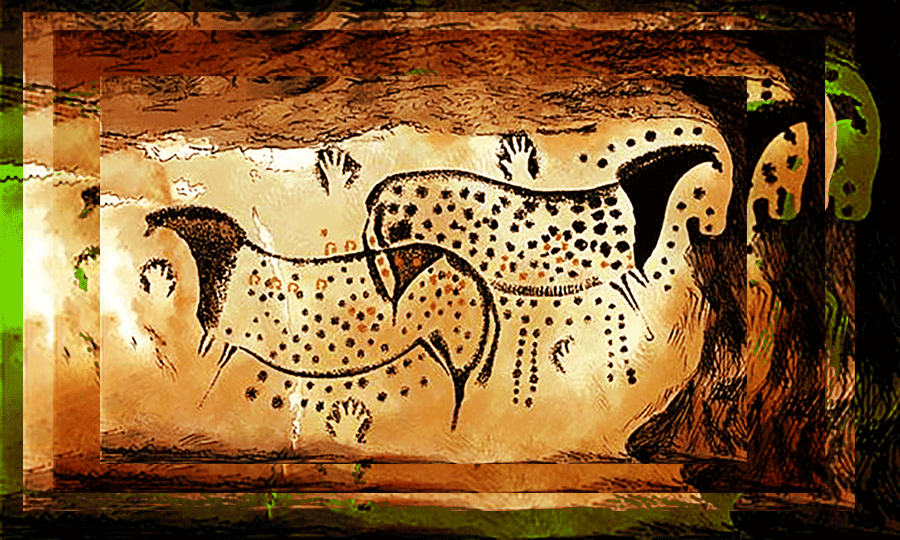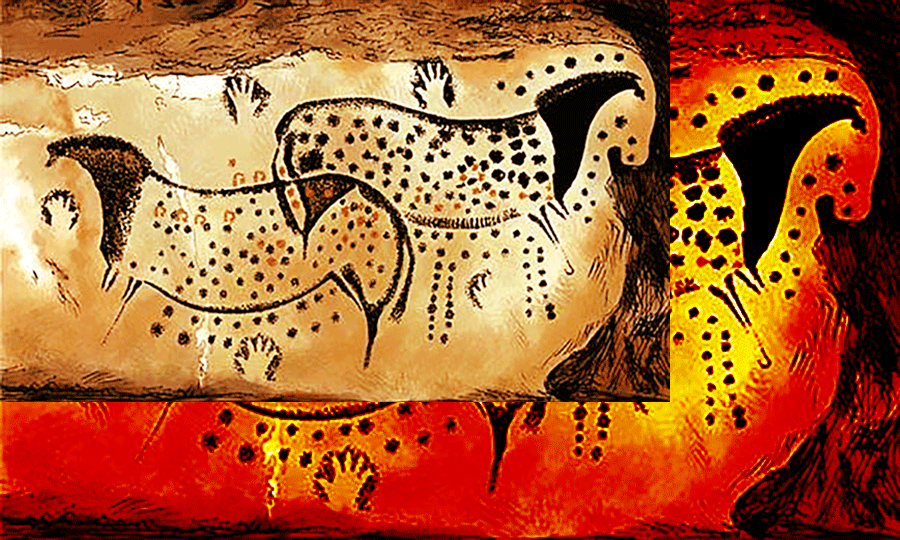
I didn’t see the horses first. They saw me. Through the crack of light in the corridor, through the fat torch of my still civilized thoughts, they approached. And without understanding, I understood that the points were not signs, but beats. They beat, yes! Like a heart or memory. Each point, a breath. Not a writing. A percussion.
I raised my hand to the wall, as a child raises his hand to a face. My palm would have held all in the shadow of another, left there twenty-five thousand years ago. A hand blown, an imprint of fire. A wire of light.
That one -man or woman-, those ones -men or women- did not paint for History, but to make it last, at least a night, in the dark cave of the world. And me, idiot of another age, I came with my grids, my codes, my analyses.
I dropped my tools. Standing still, waiting. I called. No guide, no comment. You don’t visit a sanctuary, you go there. One does not look at a cave, one gathers there. The silence is even wider than the rock, the corridors seem to sink like veins in a mortal body.
It is the belly of the earth, I follow its beat. It is not a fresco, it is a pursuit. A moment torn from erasure. The spotted horse looks at me like a forgotten brother. I feel in my fingers the need to continue the gesture. Not understand it. Take it back.
Perhaps that is the legacy: the transmission of a necessity that does not say its name. An artist does not speak to another. He gives her the silence to start over.
The horse does not look painted. It is there. Alive in its suspended millennia, a restrained breath still animates him – him and his brothers. Yet it is not their form that strikes me.
Nor this insolent elegance, the outline of a darkness so pure that it seems to come from a fire that can no longer exist. What bothers me are the points.
These small ocher circles, round, placed like a voluntary rain on the meadow of oblivion, are neither decorative nor realistic. They are on the sides of the horses but also elsewhere. They do not say anything. And that is why they spoke to me.
They are pending.
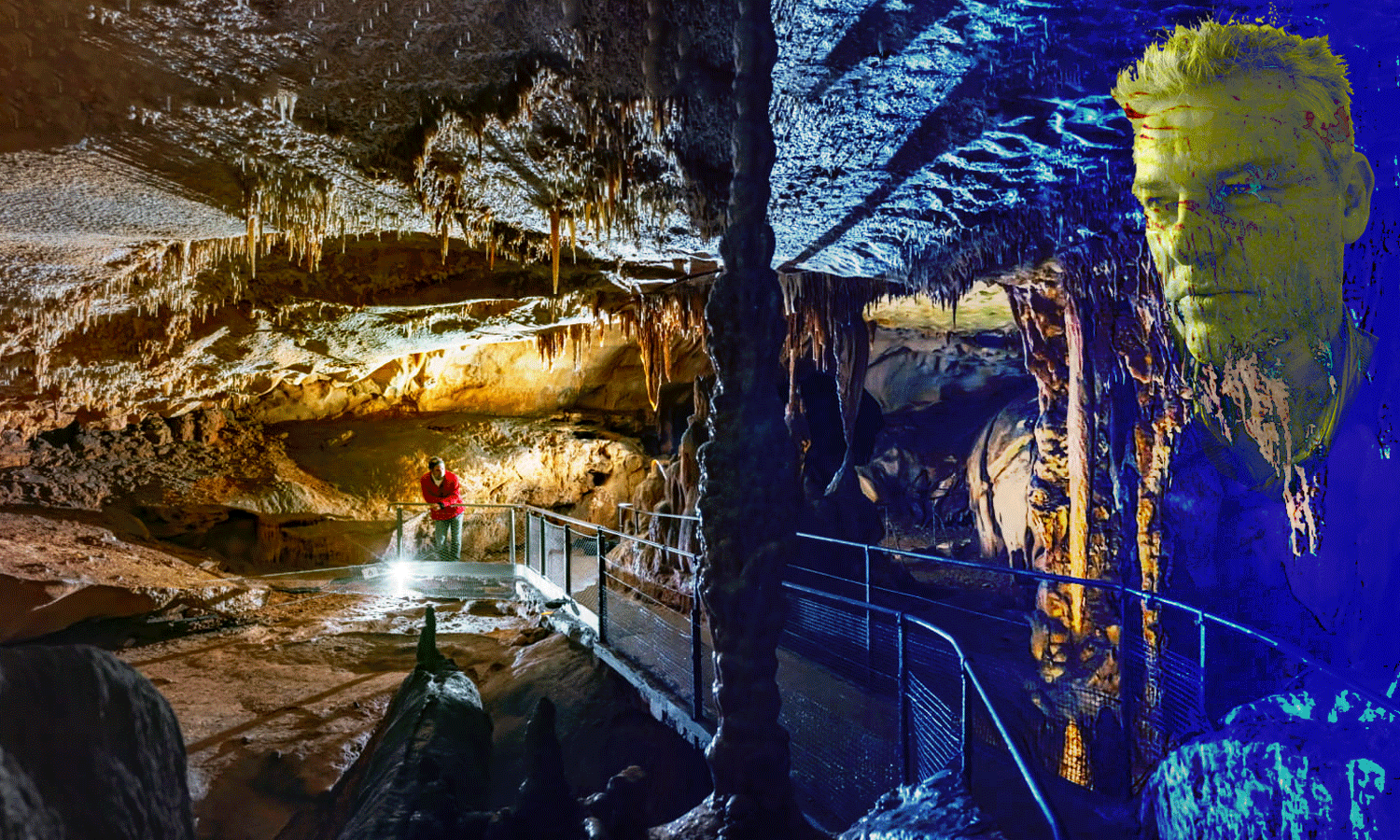
These points… for a long time, they were seen as utilitarians; we wanted to give them a function, a logic, a role. Mark of a clan, trace of a rite. Perhaps they had all that, perhaps they had only that.
Perhaps not.
I see them differently today. I see them as our suspension points, those that we sow when words are not enough, when it is necessary to give way to what we ignore, what overflows, what still pulsates.
That’s when I understood. This horse was not a message, it was an outstretched hand, like the one on the wall, at once so close and so distant, moving and fragile, but above all assertive and conscious. They are the call to imagination, not the lock of meaning. They say:
“What do you see?”
They extend their hand, but not yours. And in this distance, in this almost-contact, something unheard of is born: the consciousness of a fraternity through time. It was an invitation not to understand, but to imagine, to respond, to transmit. Not a knowledge, but a flame.
I was there, in front of these points, carrying my time full of noise, techniques, schools and pride, facing this work without name, without property, without legend. I was faced with the insurmountable, which some would call talent or genius to catalogue. The cold walls seemed warm to me, yet they warmed my heart so much, as if they kept deep within them beyond the millennia the warmth of the ancient gesture.
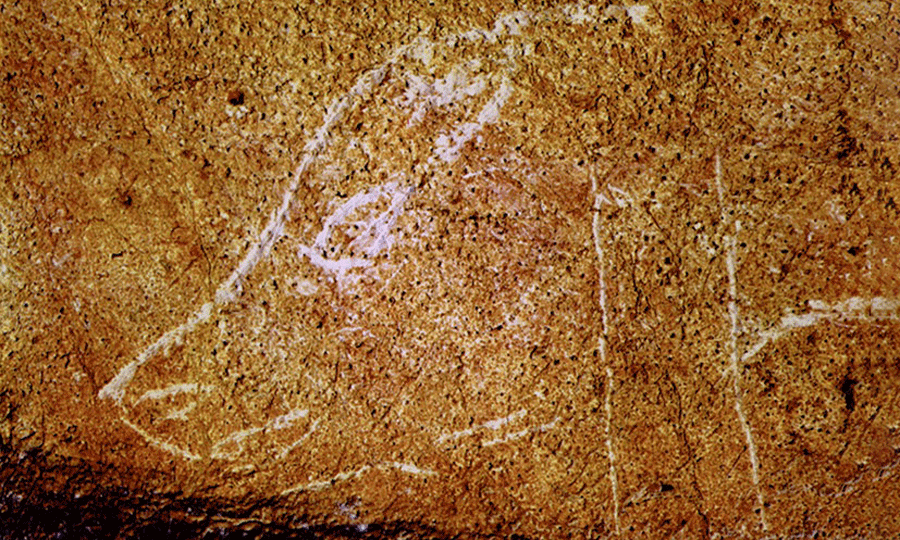
It is not a painting. It is an artist’s transmission, blindly, with no guarantee, without even knowing if the other will ever exist. And yet it has passed through. Because the imaginary is the only thing that centuries cannot dissolve. The imaginary does not die. He hides, waits, and sometimes calls. It’s not a static stage. It’s a theatre without curtains, a whisper between two fires. Theirs, the one before memory; mine, vacillating, seeking to revive what was, to remember what will be.
I stand in an archaic memory, where my imagination dialogue with that of a being that I can not name, but yet recognize. Art -this word I hesitate to write here as it seems too clear, too policed, too civilized, too dogmatic- is perhaps that: the projection of individual imagination in the common matter of the world, to inscribe a passage, a need, an absence, a future.
And through this, history is woven. Not the one we date and class, but the one we feel, that of the Man standing in front of the shadow, and who paints so that the shadow responds. I don’t know how to paint, or even draw. But I got it. Something like a permit. A breath. A foreign memory that settles in you.
At that very moment, I knew that the history of man is not built with dates or conquests, but with those solitary moments of art, almost lost, where a man stands before nothingness and dares to put a sign in it. These signs, clumsy or sublime, they are the ones who weave the great thread. It is they who make us still here, dreaming, doubting, drawing our own suspension points. Not to finish the sentence, but to say that the story continues.
With us.
As we emerged from the cave, nothing had changed; the peaceful sweetness of the oak forest adapted to the season, which responded to those past, those tens of thousands of seasons that had passed since horses and hands had beautified the subsoil of their message offered to the common grave of time.
But I had changed. I carried in me the burden of a silence that did not belong to me, but which I recognized as mine. And this charge, I know, I will pass it on. From one hand to the other. From dream to dream. From point to point.
At Pech-Merle, that day, I learned nothing. But I received everything.
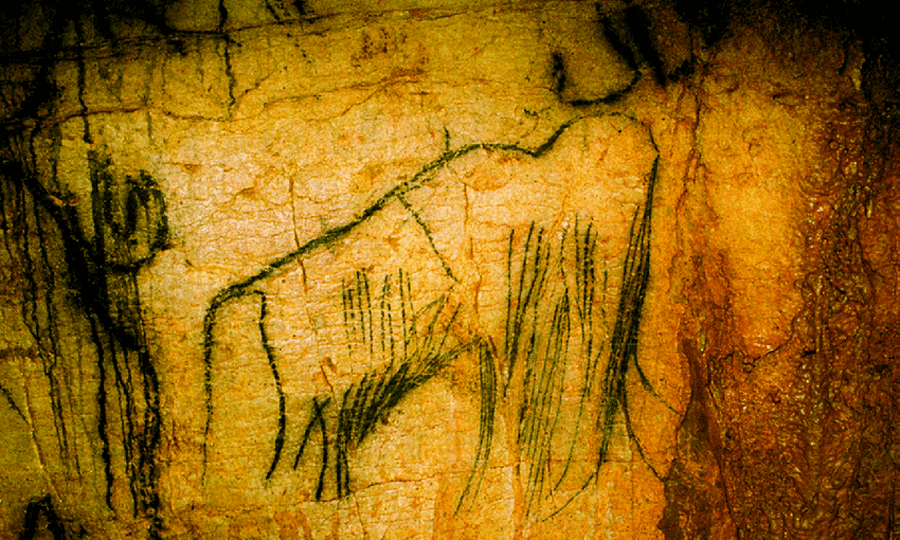
New Archaeology
- Teotihuacan Mercury
- The Altamira Case
- Pech Merle
- Bosnia: Pyramid Of The Sun
- Bosnia: Osmanagic Adventure
- Bosnia: Visoko Pyramids
- Bosnia: The Ravne Tunnel
- Strange Rocks At Fontainebleau
- Wiltshire Crop Circles
- Bermuda’s Triangle
- Devil’s Sea, Japan
- The Two Mounts Thabor
- The Deep Mystery Of Stones
- Soft Stones
- Flying Stones
